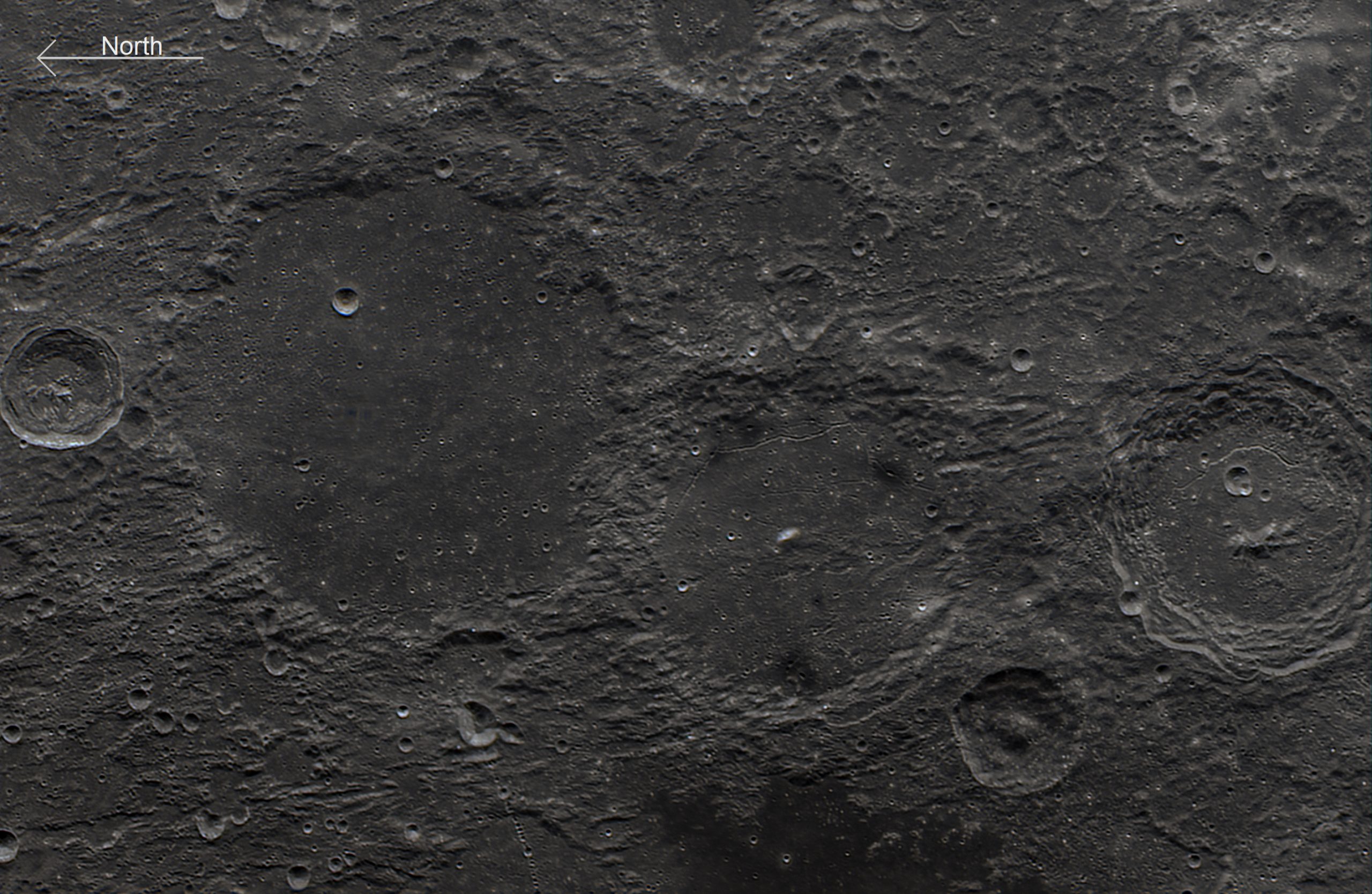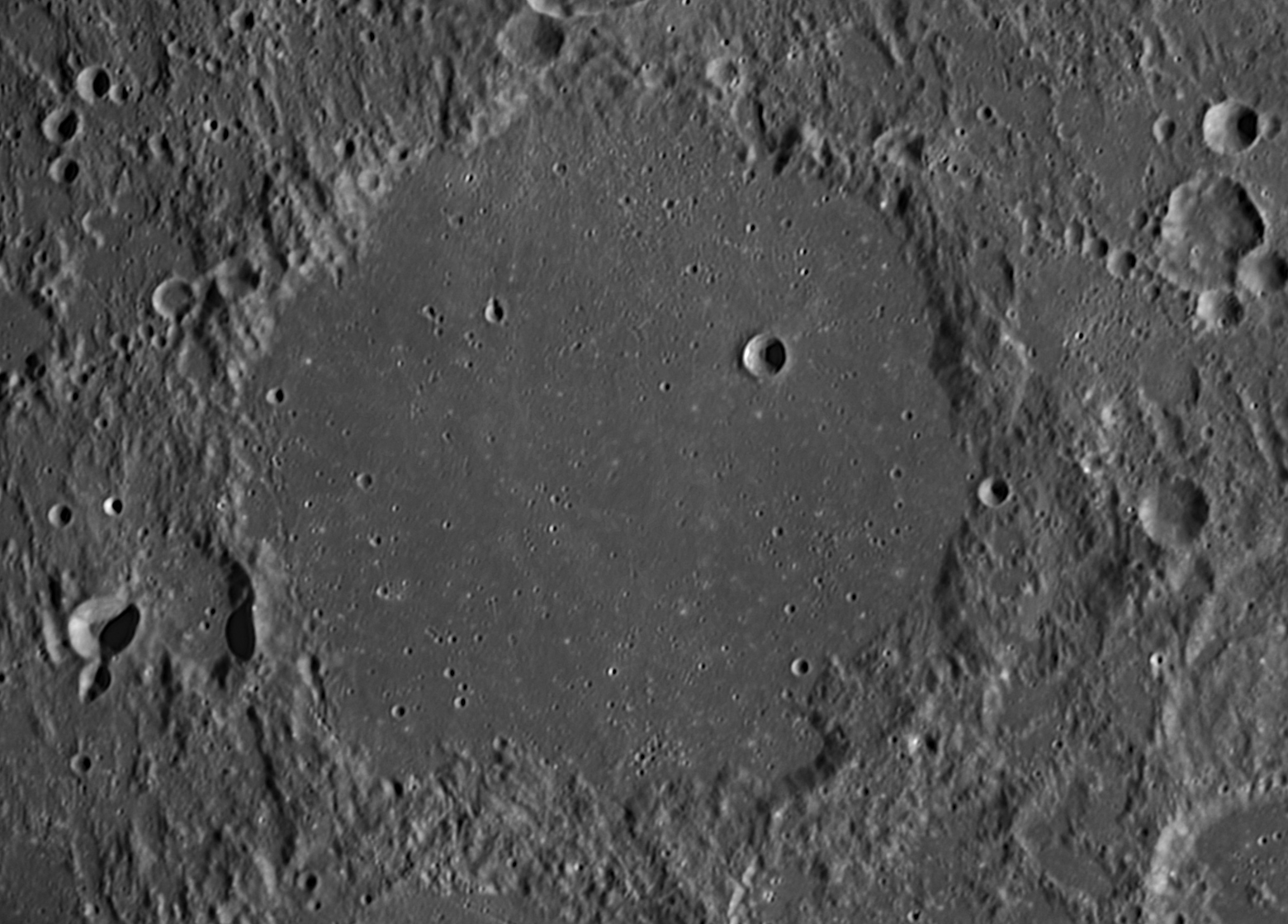Un celebre trio di crateri lunari da impatto, che abbelliscono la sponda Est del Mare Nubium. Tolomeo, dalle pareti erose e il pavimento altamente craterizzato, è il più vecchio dei tre (alcune stime ne danno un’età comparabile a quella della stessa Luna), mentre Alphonsus ed Arzachel sono ritenuti all’incirca coevi e sono più giovani di circa un miliardo di anni.
(ENG) A famous trio of lunar impact craters, grazing the eastern shore of Mare Nubium. Ptolemy, with its eroded walls and highly craterized floor, is the oldest of the three (some estimates give an age comparable to that of the Moon itself), while Alphonsus and Arzachel are regarded to be approximately same age and are younger by about a billion years.
Lunar quintet
In questo caso abbiamo effettivamente un quintetto lunare. Al “trio” Tolomeo, Alphonsus ed Arzachel (da Nord verso Sud) si aggiunge la coppia di crateri Herschel (sul bordo settentrionale della ripresa), e Alpetragius. Herschel è il più giovane dei cinque. Da notare la catena di craterini ad ovest di Tolomeo (catena di Davy) e i 3 spot scuri al bordo interno di Alphonsus, che in realtà sono sfiati vulcanici.
(ENG) In this case we actually have a lunar quintet, given that the pair of craters Herschel (on the northern edge of the shot) and Alpetragius are added to the “trio” Ptolemy, Alphonsus and Arzachel (these named from North to South). Herschel is the youngest of the five. Note the chain of craters to the west of Ptolemy (Davy chain) and the 3 dark spots on the inner edge of Alphonsus, which are actually volcanic vents.
Luanr quintet in colour
Utilizzando un G interpolato (ottenuto con il canale R della ripresa precedente combinato con il canale B) ho realizzato una ripresa a colori R(G)B della precedente immagine Lunar Quintet.
(ENG) Using the R channel of the previous Lunar Quintet and interpolating it with the B, I created this R(G)B trichromy.
The ghost of Ptolomaeus
In questa ripresa è possibile apprezzare l’alto grado di craterizzazione di Tolomeo. Molti dei crateri sono in realtà ‘fantasma’ ossia ricoperti di lava successivamente alla loro formazione.
(ENG) This image shows the amazing degree of craterization of Ptolomaeus floor. Many of the craterlets are actually ‘ghost’ – i. e. resurfaced after their formation.


